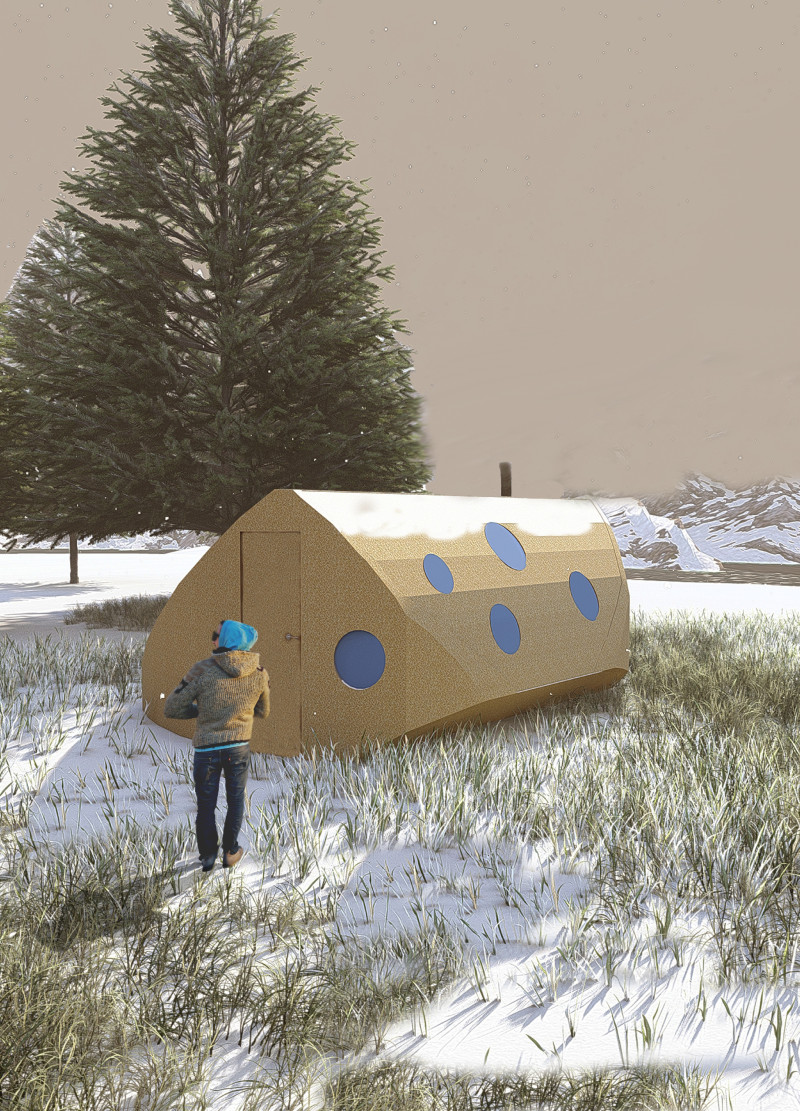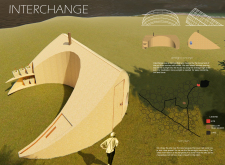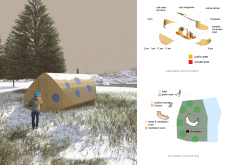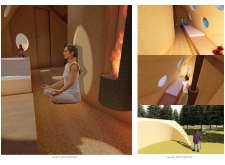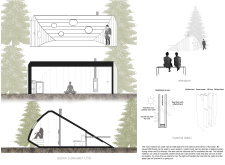5 key facts about this project
Interchange is a contemporary design that harmonizes living space with the natural environment. Located near a lake, the setting provides a thoughtful backdrop for a cabin that is meant to encourage meditation and reflection. The design concept is rooted in the movement of the sun throughout the day, allowing natural light to play a significant role in shaping experiences within the space.
Design Concept
The main idea behind Interchange is to maximize sunlight exposure from morning to evening. This guiding principle influences the layout and orientation of the cabin. Openings are strategically placed to welcome in light. The result is a space that enhances the sense of calm and focus, making it ideal for those seeking tranquility in their daily lives.
Site Planning
Choosing the site was an important part of the design process. The area’s sparse tree coverage near the lake ensures that abundant sunlight reaches the cabin while also reducing the chances of mosquito disturbances. This decision illustrates a careful response to environmental factors, contributing to the overall comfort of the space and creating a deeper connection with the landscape.
Material Utilization
A key aspect of the design lies in the selection of materials, which balances practicality with environmental responsibility. Oriented Strand Board (OSB) is primarily used for both the exterior and interior. It is known for its durability and adaptability. Cellulose insulation adds to the efficiency of the building by helping maintain a pleasant temperature throughout changing seasons. Together, these materials support the architectural vision while committing to eco-friendly practices.
Spatial Organization
The interior layout effectively separates public and private spaces, encouraging both social engagement and personal reflection. This clear division is intentional, designed to suit different activities while keeping a cohesive feel throughout the cabin. Insulated windows enhance this experience, allowing sunlight to warm the interiors while preventing moisture from entering.
A notable detail is the way light and shadow interact throughout the day. The carefully positioned openings create shifting patterns that invite users to engage with their surroundings continuously. This dynamic quality enriches the living experience, making it more engaging and connected to nature.


